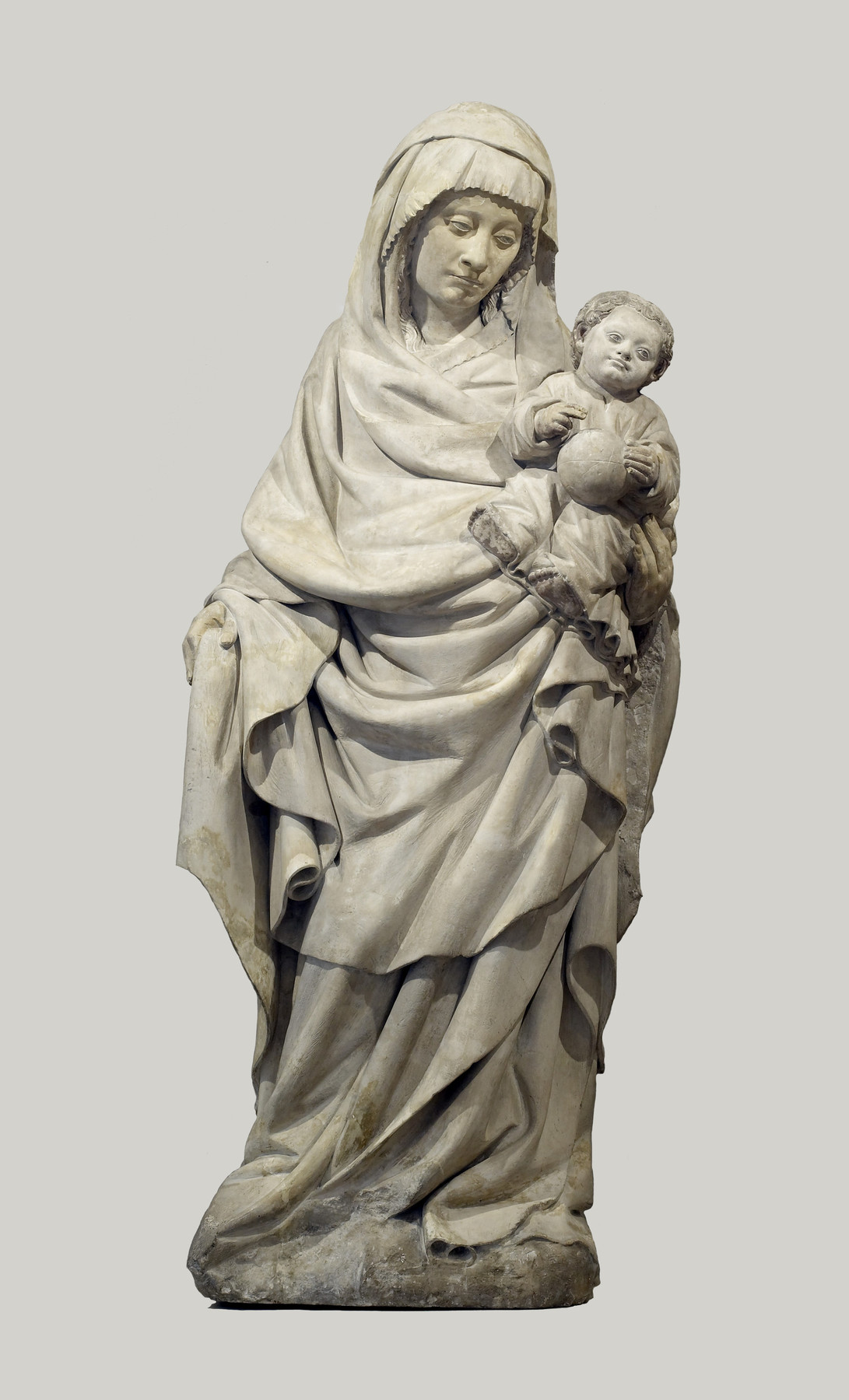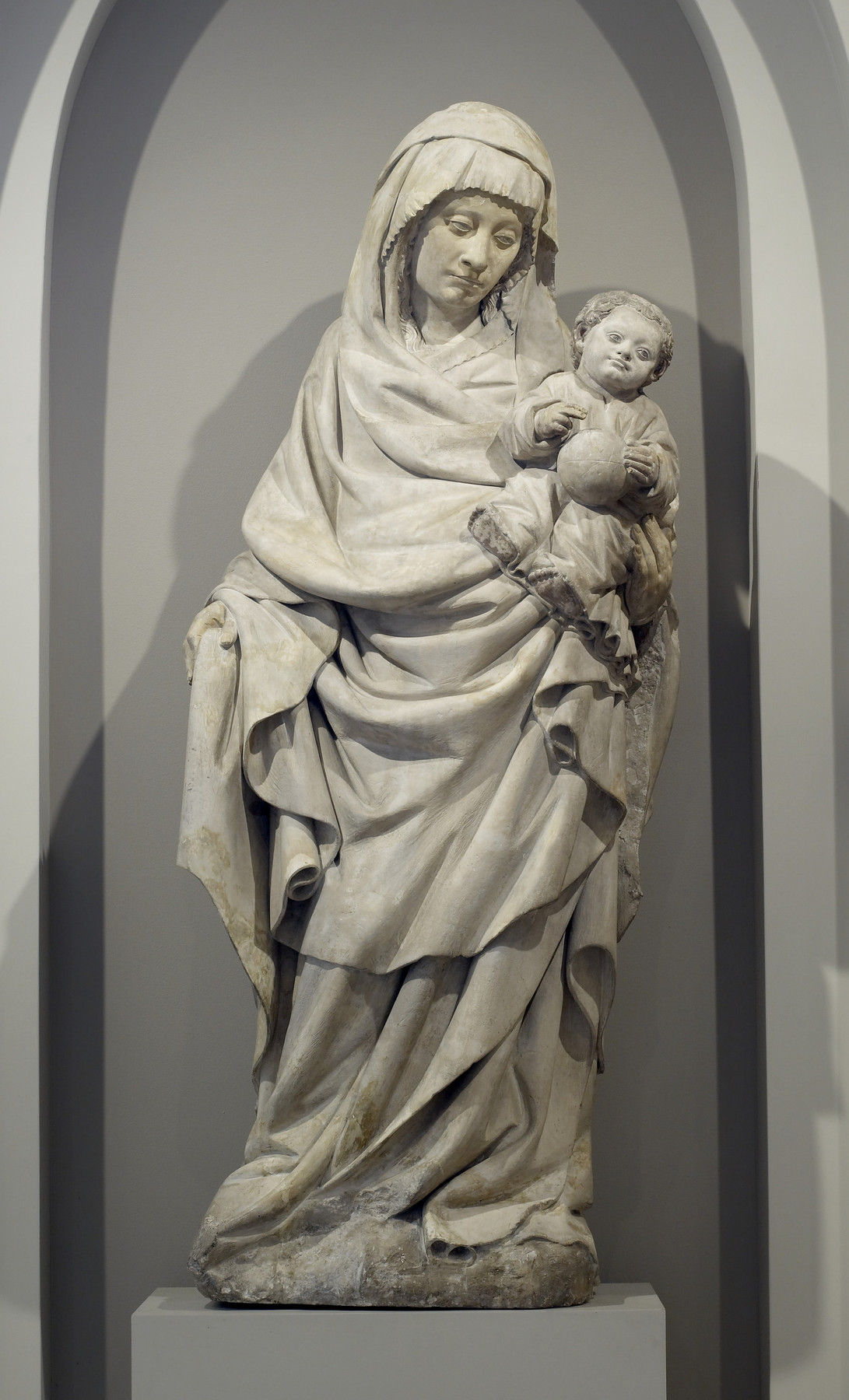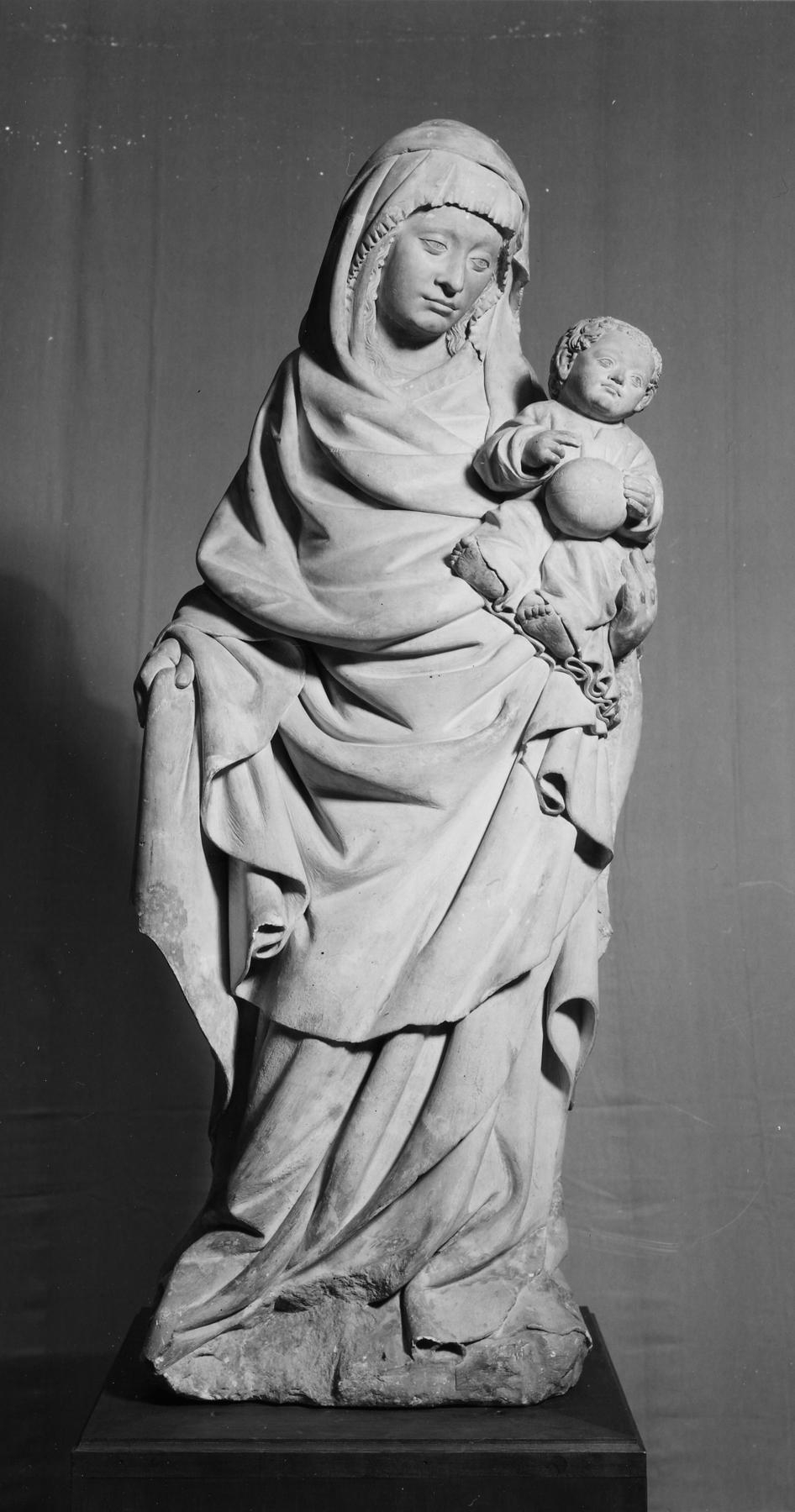Virgin and Child
(Renaissance Europe )
Nearly life-size, this masterpiece of Burgundian carving comes from a chapel in the cathedral of Besançon. The Virgin and Child, with their thick drapery, weighty bodies, and lack of ornament, reflect the 15th-century movement away from the Gothic ideal of the elegant, slender aristocrat towards greater realism and ordinary proportions. The revolution was initiated in Dijon by the sculptor Claus Sluter, in whose following this unknown master must be counted.
The Christ Child's ball represents the world and therefore his dominion over all things: the paradox of the tiny child with infinite power expressed through a childish toy.
Provenance
Provenance (from the French provenir, 'to come from/forth') is the chronology of the ownership, custody, or location of a historical object. Learn more about provenance at the Walters.
Cathedral of Besançon; Mr. Champy, Chateau Saint-Apollinaire [near Dijon], 1906, by purchase; Mr. Décailly, Chateau Saint-Apollinaire, 1932, by inheritance; Simon Le Grand, Amsterdam, 1938, by purchase; Raphael Stora, Paris and New York, ca. 1940, by purchase; Walters Art Museum, 1959, by purchase.
Exhibitions
| 1998-2001 | Highlights from the Collection. The Walters Art Gallery, Baltimore. |
| 1962 | The International Style: The Arts in Europe Around 1400. The Walters Art Gallery, Baltimore. |
Conservation
| Date | Description | Narrative |
|---|---|---|
| Technical Report | other | |
| 12/1/1959 | Treatment | cleaned; loss compensation |
| 12/4/1959 | Treatment | cleaned; loss compensation; mounted |
| 5/20/1988 | Treatment | cleaned |
| 8/3/1994 | Treatment | cleaned |
Measurements
H: 61 1/2 x W: 25 3/8 x D: 6215 9/16 in. (156.2 x 64.5 x 39.5 cm)
Credit Line
Museum purchase, 1959
Location in Museum
Accession Number
In libraries, galleries, museums, and archives, an accession number is a unique identifier assigned to each object in the collection.
In libraries, galleries, museums, and archives, an accession number is a unique identifier assigned to each object in the collection.
27.560






